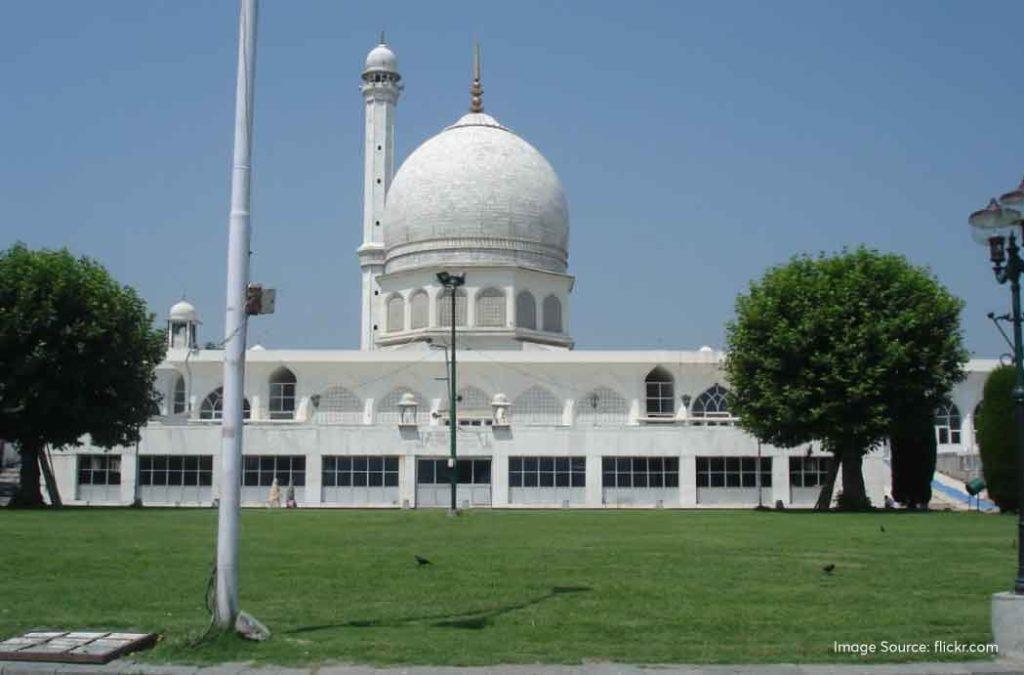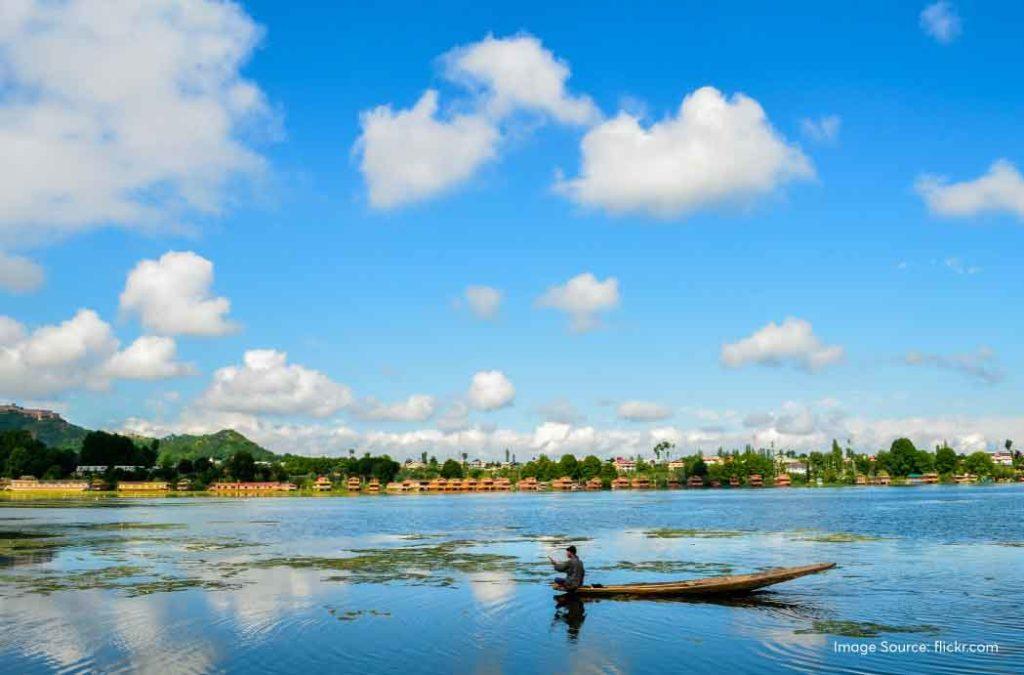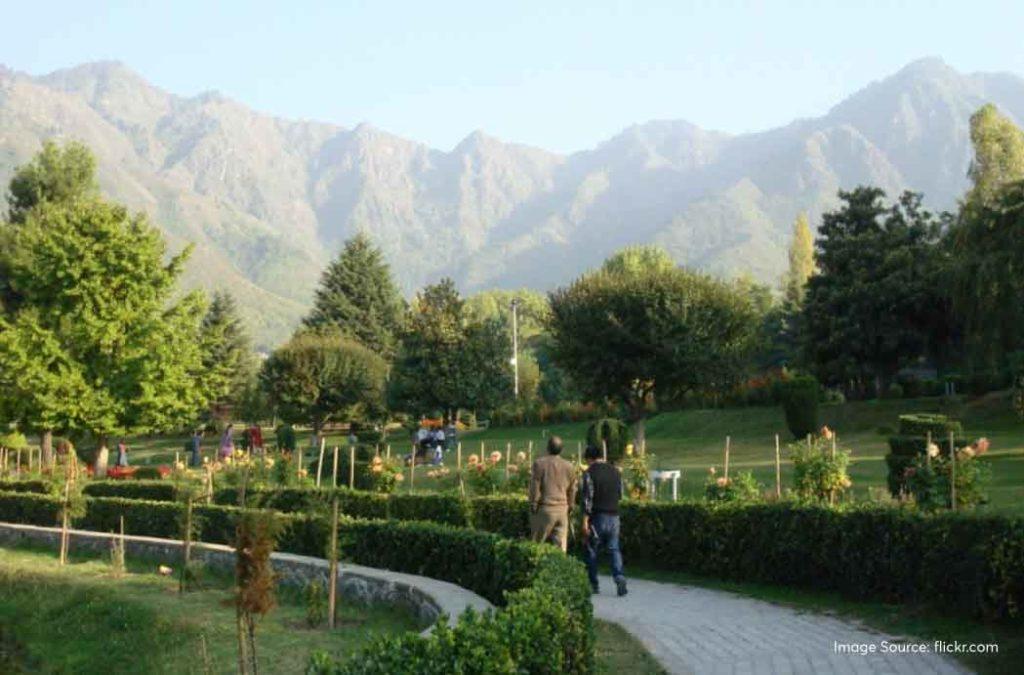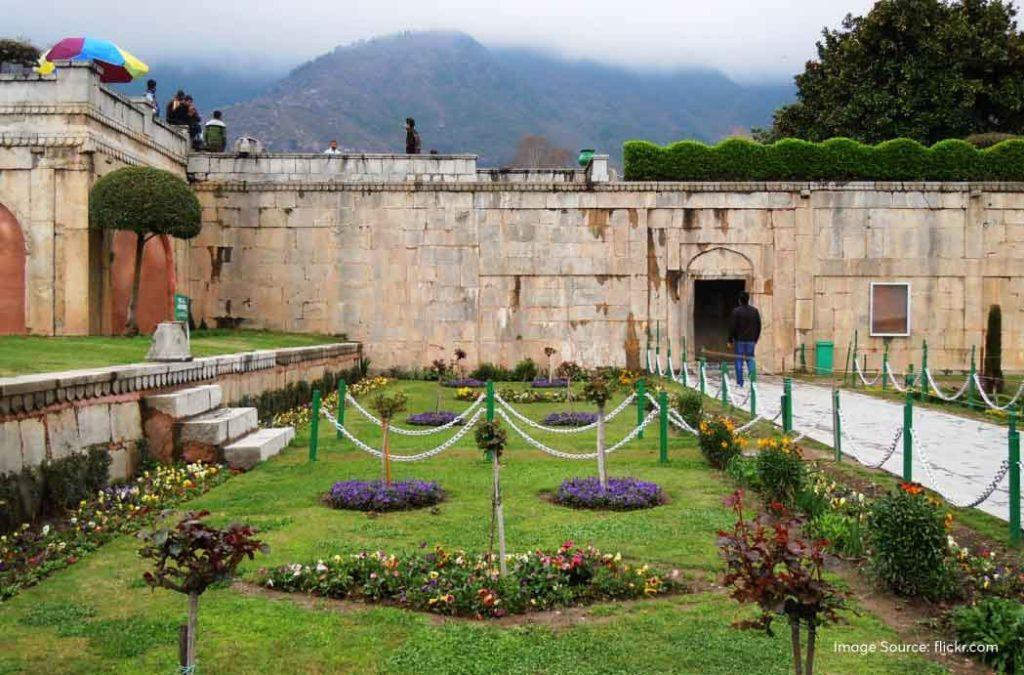Hearts always look for destinations that transcend your idea of what heaven looks like. Thanks to nature, it created places of jaw-dropping beauty where every rhythm is aligned with the music. We are definitely talking about the best places to visit in Srinagar! Situated in the state of Jammu and Kashmir, this city leaves you in awe with its dramatic natural cover.

Tourist attractions in Srinagar are definitely known for their unspoiled beauty, historic period and association with the Mughal empire. From gardens to palaces and temples, every location is a blend of history and architecture. Lush greenery, vibrant flowers and views of Dal Lake truly melt your heart like never before!
15 Heartwarming Places To Visit in Srinagar are –
1. Shalimar Bagh Mughal Garden
The state of Jammu and Kashmir surprises with stunning Mughal architecture. Not only monuments; even the gardens here are constructed in perfect symmetry. Shalimar Bagh is indeed one of the best places to visit in Srinagar for a soothing time. It was built by Jahangir for his wife, Nur Jahan. Interestingly, the garden was more of a retreat for the Mughal emperors, all thanks to its beautiful surroundings!

The Persian name Shalimar itself suggests an abode of love. Due to the decline of the Mughal Empire, the garden witnessed multiple changes too. In today’s time, some structures are under restoration while some showcase their original creation. Vibrant flowers, massive trees, well-manicured lanes and water fountains elevate your time here.
Entry Fee: INR 20 to 30 Per Person
2. Tulip Garden
It is only in Srinagar where you get to live your filmy dreams. Imagine walking amidst hundreds of colourful tulips with the backdrop of lofty mountains. That’s exactly what Tulip Garden offers! Being one of the famous places to visit in Srinagar, it is an ideal spot for photography.

It is generally in the months of March and April when the garden is surrounded by awe-inspiring views of the flowers. Apart from this, you can also walk through the rose garden, lily garden, vegetable garden and fruit orchard. So, get ready for a wholesome experience at one of the best tourist attractions in Srinagar.
Entry Fee: INR 75 for Adults | INR 30 for Children
Book Budget Hotels in Jammu
3. Pari Mahal
Most tourist places in Srinagar are about the city’s breathtaking beauty and panoramic views. Pari Mahal is also one of them! It is a massive palace where you get an opportunity to witness the jaw-dropping views of the Dal Lake. Basically, the structure is divided into multiple levels, the topmost being the best. Open skies and the view of blues enrich your time in the city.

The blend of Islamic and Persian architectural styles speaks highly of the historic elegance. At the entrance, you can also take pictures in Kashmiri dresses by renting them from here. Every corner is an excellent frame to capture the beauty, so make sure to carry your camera along. The Mughal-era monument sure is one of the top-rated places to visit in Srinagar for a soothing getaway.
Entry Fee: INR 20 to 40 Per Person
4. Shri Shankaracharya Temple
Your journey in the state remains incomplete without visiting the famous Shri Shankaracharya Temple. It is one of the divine places to visit in Srinagar for a sacred experience. The path to reach the temple itself is a combination of adventure and thrill! Perched on top of the hill, you need to climb 250+ steps to reach the main temple.

Also, there are no alternative options as the area is heavily guarded. Dedicated to Lord Shiva, the temple is named after the great philosopher Adi Shankaracharya. It is believed that he visited this site during his spiritual journey. After reaching the top, you get to see heartwarming views of the misty hills romancing with lush greenery.
5. Dargah Hazratbal Shrine
Nothing better than visiting a sacred place of beauty! Dargah Hazratbal Shrine is one of the top-rated places to visit in Srinagar. Known for its Islamic architecture, it holds immense importance in the hearts of locals as well as travellers.

What’s more? The tranquil atmosphere is certain to elevate your time. Surrounded by massive gardens, the shrine also has a river source right behind it. Being one of the famous tourist attractions in Srinagar, make sure to choose modest attire to show respect.
6. Chashme Shahi Garden
Every place in the serene city holds amazing secrets waiting to unfold. Chashme Shahi Garden is surely one of the interesting places to visit in Srinagar. Surrounded by lush greenery, it is best known for a naturally cool spring that feeds the garden. The water is believed to be mineral-rich and safe for drinking too.

As it is on the list of famous tourist places in Srinagar, you can find hundreds of tourists around. The panoramic views of the hills and surrounding Dal Lake uplift its natural elegance. You can walk through vibrant flowers and bushes, thereby healing your heart.
Entry Fee: INR 30 to 50 Per Person
7. Badam Wari Park
You must have seen many tea gardens in india; however, watching a badam (almond) park is rare. Being one of the famous places in Srinagar, Badam Wari Park is a unique destination to go to! It is surrounded by almond trees and you can spot them during the summer months.

What’s more? The garden is home to colourful flowers and lush green bushes. You can also find Mughal-style gazebos for resting after soothing walks. Planning a picnic at one of the scenic tourist places in Srinagar is a top thing to do. Make sure to carry enough food and water.
Entry Fee: INR 20 to 40 Per Person
8. Jamia Masjid
Who doesn’t know of the famous Jama Masjid in the capital city? Just how it amazes you, Jamia Masjid in Srinagar is no less! The mosque is highly revered by locals and travellers alike. Being one of the sacred places to visit in Srinagar, it is known for its stunning construction.

Interestingly, you can witness approximately 378 wooden pillars made from Deodar trees. Unlike marble or stones, the wooden elements exude vibes of tranquillity. It is best to attend the prayers and take home a sense of fulfilment. Apart from that, make sure to adore the Indo-Saracenic architecture and glorious interiors.
9. Hari Parbat
If adventure is your thing, Hari Parbat is one of the best places to visit in Srinagar. Parbat translates to a mountain and that’s exactly why you can expect a thrilling climb to reach the top. It also has a massive fort that remains not-so-crowded due to the climb.

It is important to know that you need to go through security checks and have to provide a valid government ID to the security personnel here. The officials also enquire about your marital status and the purpose of visit, as it is a protected zone. After reaching the top, you can happily admire the enormous and colourful town of Srinagar
Entry Fee: INR 50 for Indians | INR 100 for Foreigners
10. Dal Lake
Your visit to the city remains incomplete without visiting the popular Dal Lake. It is indeed one of the top-rated places to visit in Srinagar, all thanks to its beauty! It is that inspiring spot that attracts thousands of travellers to Jammu and Kashmir.

Popularly known as the Jewel in the Crown of Kashmir, you can easily spend long hours here. The lake remains frozen during the winter season, thereby not allowing the boating facility. You can opt for the Shikara Ride and even find multiple food stalls nearby. Make sure to add layers to clothing as the temperature drops gradually.
Cost for Shikara Ride: INR 400 to 700 Per Hour (you must negotiate).
11. Nigeen Lake
Nigeen Lake is another picturesque destination in the heart of the city. We sure know tourists who love less crowded places to feel their tranquillity. So, if you find a lot of travellers near Dal Lake, head to this one for a peaceful atmosphere.

Interestingly, this lake is known as the Jewel in the Ring, thereby adding an equal level of significance to it. While you can find similar experiences here, the costs are comparatively low. You can relax, dress up in traditional Kashmiri outfits and enjoy the vibrant surroundings.
12. Zero Bridge
After exploring the city throughout the day, you do need a break from the touristy experiences. That’s when you must head to the Zero Bridge! It is one of the tranquil places to visit in Srinagar for locals as well as travellers. You get to witness the slow life of locals after completing their everyday chores.

What’s more? It is lit after sunset and definitely becomes one of the famous tourist attractions in Srinagar. Additionally, it is home to a few cafes and street-side food stalls. So, make sure to try delicious food from the city right from the heart of locals. Lastly, you can surely click some Instagram-worthy pictures here.
13. Jawaharlal Nehru Memorial Botanical Garden
When in this city, you can explore as many gardens as you would love to admire. Jawaharlal Nehru Memorial Botanical Garden is another gem known for its inspiring creation. Being one of the famous places to visit in Srinagar, it is known for its floral diversity. If you talk about numbers, it is home to more than 1 lakh ornamental plants.

What’s more? You also get to see a massive collection of oak and temperate plants that are only found in certain parts of the country. It also has a man-made lake adding to its natural charm. You can either plan a family picnic or a romantic date. As it is one of the famous tourist places in Srinagar, it welcomes travellers from all walks of life.
Entry Fee: INR 20 to 30 Per Person
14. Nishat Garden
How can you miss witnessing the gorgeous beauty of Mughal construction? Nishat Bagh has to be on top of your list of tourist attractions in Srinagar. The breathtaking destination is divided into 12 tiers, with each representing a zodiac sign. Terraced gardens offering stunning views of the hills – what more would you ever need?

As you walk through the garden, you come across water fountains, well-manicured lanes and a series of endless flowers and bushes. It also offers amazing views of the Dal Lake, thereby making it a vantage point for photography. It is best to visit during early morning as the garden attracts large footfalls.
Entry Fee: INR 30 Per Person
15. Masjid Dastgeer Sahib
It is only at the mosques where you get to understand the cultural heritage of the state. Masjid Dastgeer Sahib is indeed one of the sacred places to visit in Srinagar for a soothing time. This Sufi shrine is highly revered by the locals, all thanks to its calming vibes and powerful aura. As you enter the mosque, you can see age-old architectural styles.

Detailed carvings and Persian calligraphy on the walls truly elevate its significance. While the exteriors are all stunning, you are certain to be awestruck with its dramatic interiors. Photography is strictly prohibited inside the mosque; hence, it is advisable to follow rules. Spend a serene time; attend prayers or meditate amidst the melodies of the holy verses.
Interesting Things To Do in Srinagar
While you get to cover the most famous places in Srinagar, there are multiple experiences transcending the ordinary. You must keep Sri Kheer Bhawani Durga temple and Shah E Hamdan R.H. Mosque for a spiritual extravaganza.

While hotels in Jammu are ideal for a comfortable stay, you can even try staying in a houseboat for a day. Who doesn’t love souvenirs? So, head to Lal Chowk Market for a wonderful collection of Pashmina shawls, accessories and handicrafts.
Your Ticket for the Shikara Ride!
After knowing all about the best tourist places in Srinagar, it is time to plan a fun-filled stay in the city. Enormous Mughal gardens, historic monuments and busy shopping streets enrich your time here. From snow-capped peaks to lush green trekking trails, the city transforms landscapes seamlessly. No matter which season you choose, Srinagar surprises you every time you visit the place. So, let’s go to this heavenly destination!













